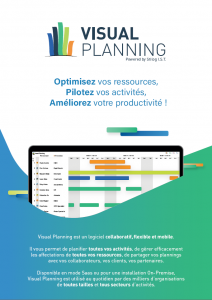Overworked nurses are more likely to make mistakes. Nurses who work above optimal levels are 40% more likely to be associated with patients who pass away in the hospital and are up to 30% more likely to be involved in other patient safety issues. Nurse scheduling tools can help you avoid having overworked RNs on shifts, reducing safety issues and increasing the chances of more positive patient outcomes.
Find out more about the benefits of good nurse scheduling below and learn about five must-have scheduling resources for nursing departments.
What Is Staff Scheduling in Nursing?

Staff scheduling in nursing refers to ensuring proper coverage of all clinical areas in a hospital or other facilities. To achieve this, someone must be in charge of creating nurse work assignments, aligning each nursing professional on the staff with a specific set of hours or shifts.
In most cases, nurse scheduling is handled a few weeks ahead of time. This allows nurses to prepare for their shifts and provides time for nurses who need to switch shifts to follow procedural requirements for doing so.
Why Is Scheduling Important in Nursing?

Scheduling ensures there are enough qualified nurses within a department, wing or floor to meet the needs of the expected patient population on a daily basis. Good nurse scheduling has benefits beyond promoting patient safety, including:
- Decreased staffing costs. Having enough nurses on shift to meet patient needs safely is important. But having too many nurses means staff expenses that don’t align with revenues. Good scheduling makes it easier to walk the line on staffing to reduce those unnecessary expenses.
- Increased compliance. Laws in some jurisdictions require certain nurse-to-patient ratios. Healthcare organizations are also required to have staffing policies and stick to them. Scheduling processes support compliance with these rules.
- Lower rates of absenteeism. When scheduling processes and tools take factors such as nurse shift preferences and work-life balance into account, it leads to lower absenteeism and an easier time keeping shifts well-staffed and running smoothly.
- Better nurse retention rates. Nurses who are happier with their schedules and not overworked are more likely to stay with a facility longer.
5 Important Scheduling Resources for Nursing Departments

Having the right tools in place is important to supporting strong nurse scheduling processes. Here are five resources any facility should have to support good nurse scheduling.
1. A Realistic Staffing Plan

Scheduling that works well starts with a realistic and detailed staffing plan. Some steps in creating a staffing plan include:
- Defining FTEs. Typically, a full-time nursing employee is one that works at least 80 hours within a two-week pay period. If someone regularly works 60 hours within a two-week pay period, they would be considered 0.75 FTE.
- Determine FTE needs. Determine how many FTEs you need to care for the expected patient volumes in upcoming weeks and months.
- Staff up accordingly. You can meet those FTE goals with a combination of full-time on-staff nurses, part-time on-staff nurses and nurses that fill in through staffing partners.
The end goal is to have enough nurses that you can easily fill spots on your schedules without relying on undue overtime.
2. A Designated Scheduler With a Trained Backup

Ensure that one person is in charge of scheduling. If you use a decentralized approach that allows scheduling at the department or unit level, one person in each department or unit should be tasked with managing the schedule.
Often, a nurse manager or other clinical leader handles scheduling. To avoid confusion and issues, make sure you have a trained backup who keeps up with scheduling issues and is ready to step in to cover scheduling should the regular designee get sick, take time off for vacation or leave the position.
3. Methods for Collecting Nurse Work Preferences

Use scheduling software or other tools to collect nurse preferences for shifts. At a minimum, you should know:
- Whether nurses prefer to work 8-, 10-, or 12-hour days
- Who prefers or is willing to work weekends
- What shifts are most and least preferred by each nurse
You can’t always provide the ideal schedule for every nurse, but having this information in your systems lets you try. And that goes a long way to supporting positive staff morale and keeping qualified clinical talent in your organization.
4. A Holistic Policy for Time Off and Shift Switching

Take time to write a policy that covers time off and shift changes. Without a written policy that provides processes for as many scenarios as you can think of, you have to make decisions on the fly. That can lead to unfair decisions about who can take time off or switch shifts and who can’t — or the perception that decisions are unfair. By following a written policy at all times, you avoid or drastically reduce such issues.
5. A Scheduling System That Puts It All Together

Scheduling software pulls all these other resources together, letting you automate much of the job of nurse scheduling. You can design shift schedules that make sense with your staffing plan and use intelligent automations to ensure people with the right clinical skills are in place for all relevant shifts.
Visual Planning offers employee scheduling and time-tracking software that lets you manage shift needs while tracking nurse hours — so you’re not overworking RNs or putting patients at risk. Added compliance benefits help you track re-licensure requirements and manage continuing education hours.
For more information about how Visual Planning can help you perfect your nurse scheduling processes, reach out today for a demo.
Nurse Scheduling FAQ

Manale is a passionate about digital marketing. She joined STILOG I.S.T in 2018.
She brings SEO & SEA expertise, email marketing and creative content marketing to create a great brand experience for Visual Planning customers.



